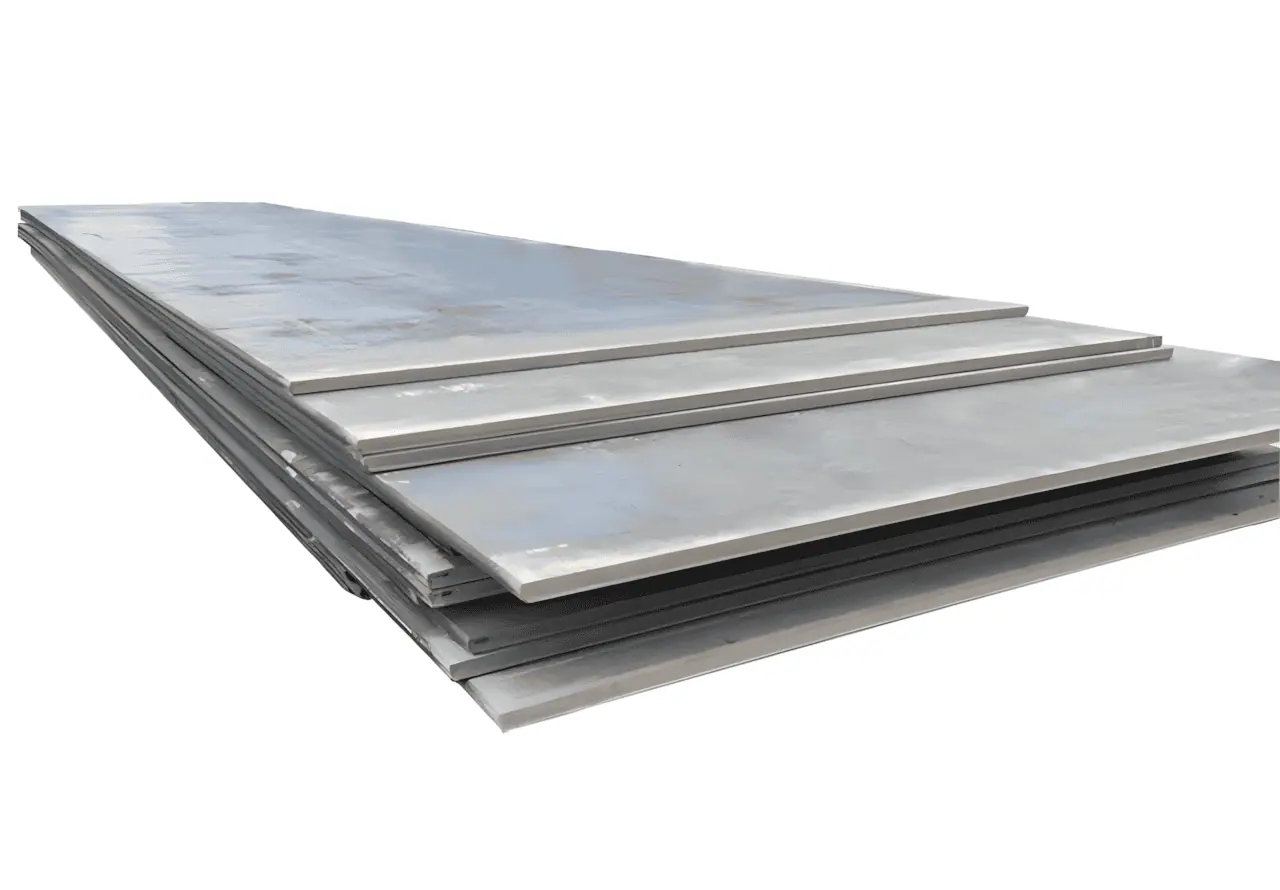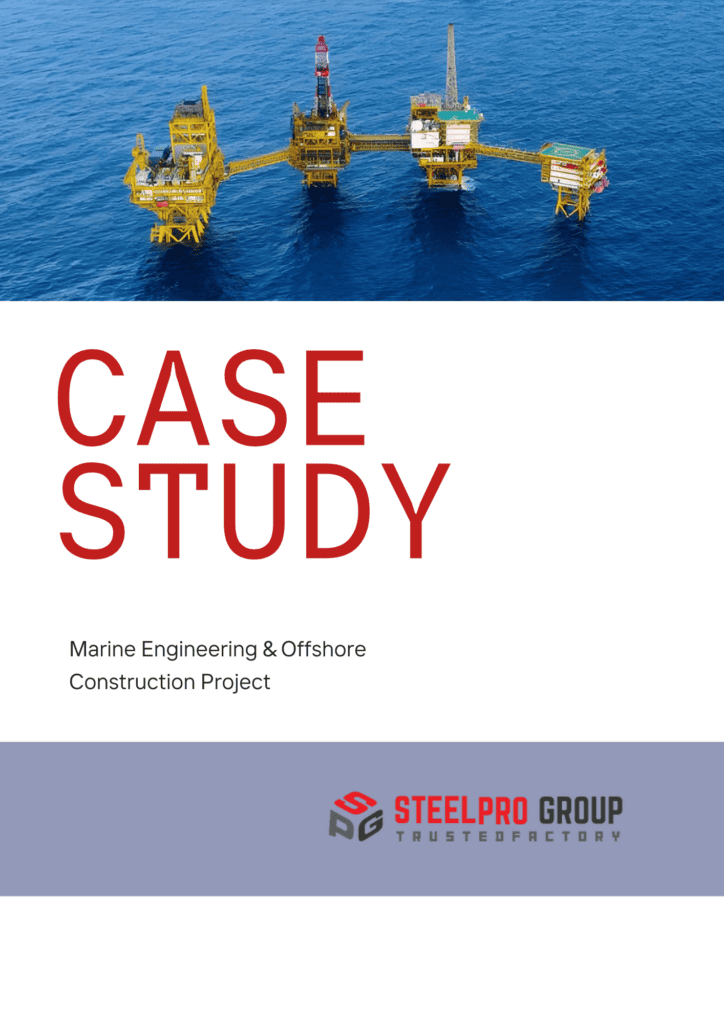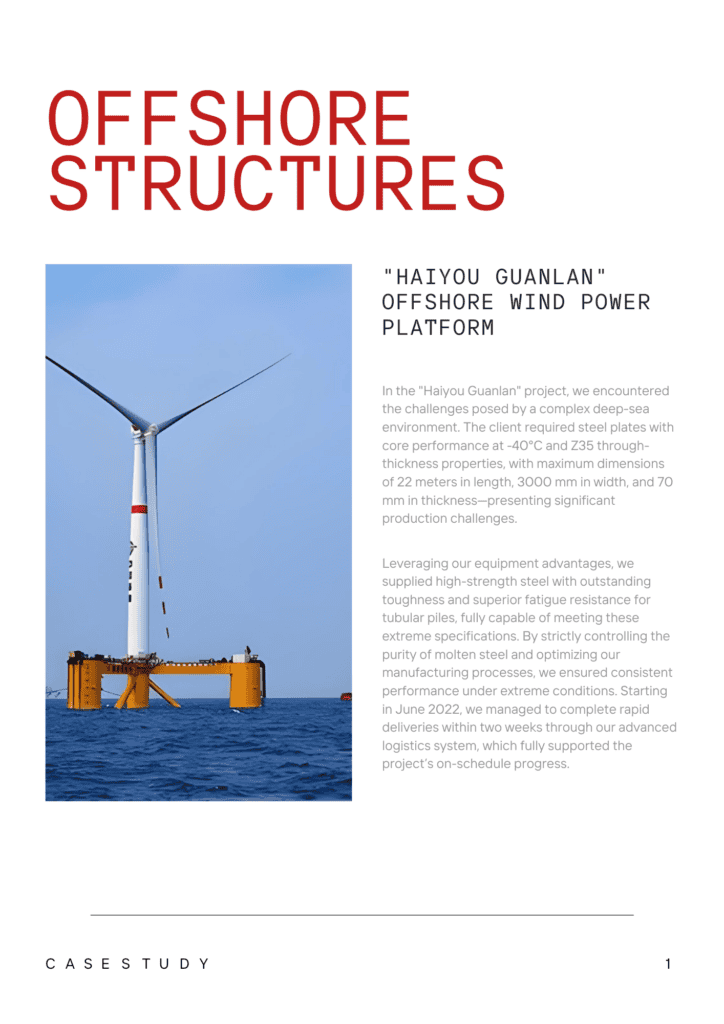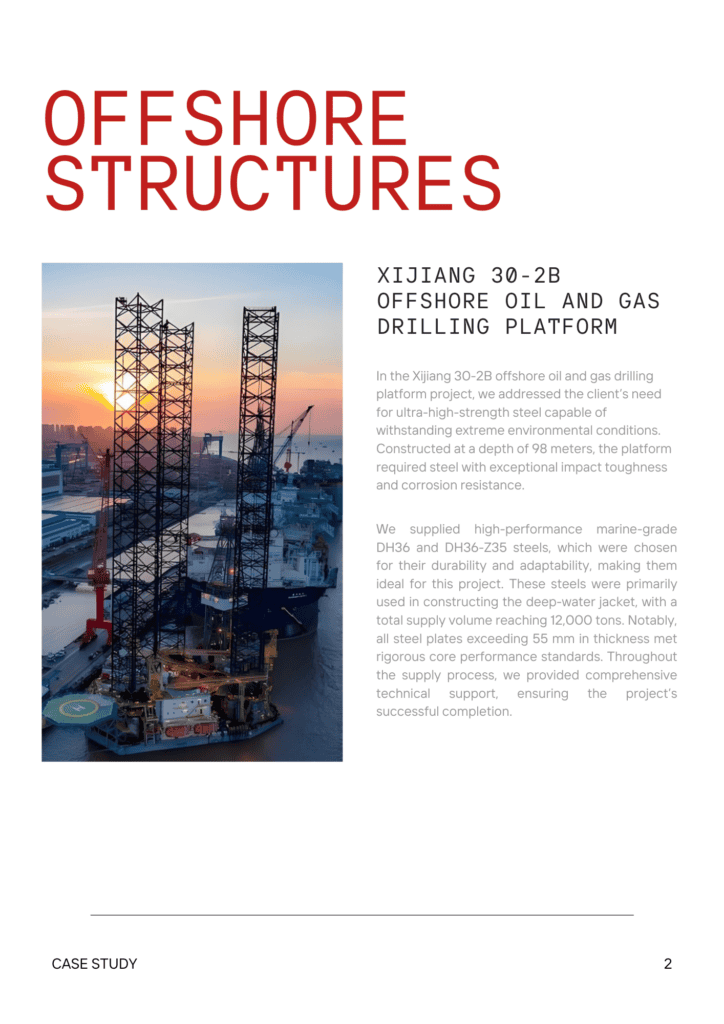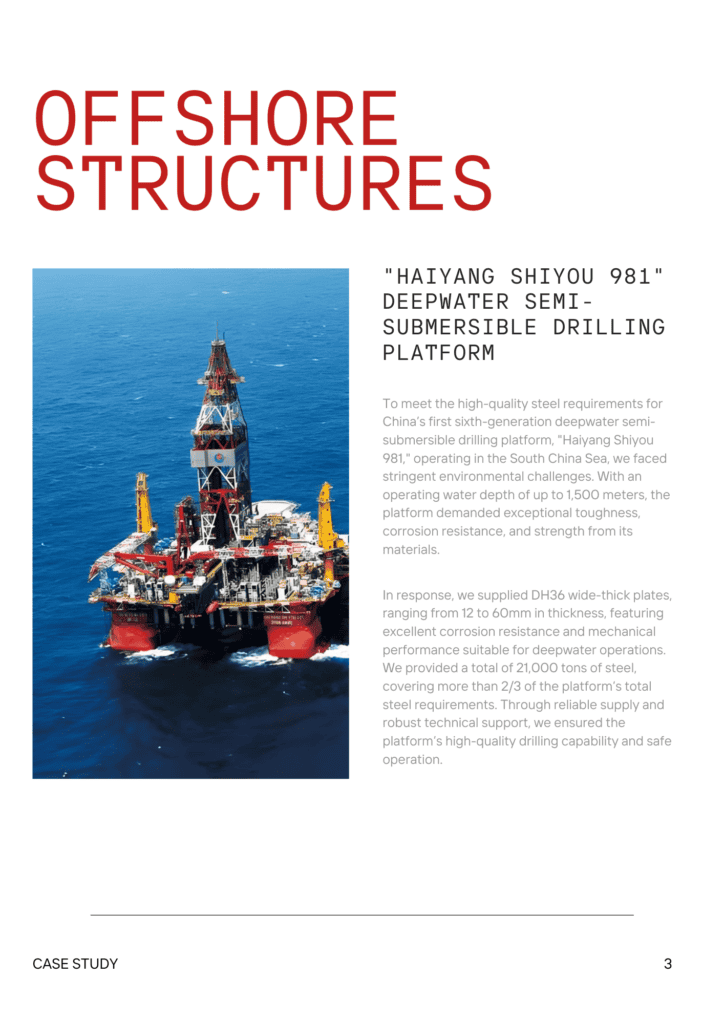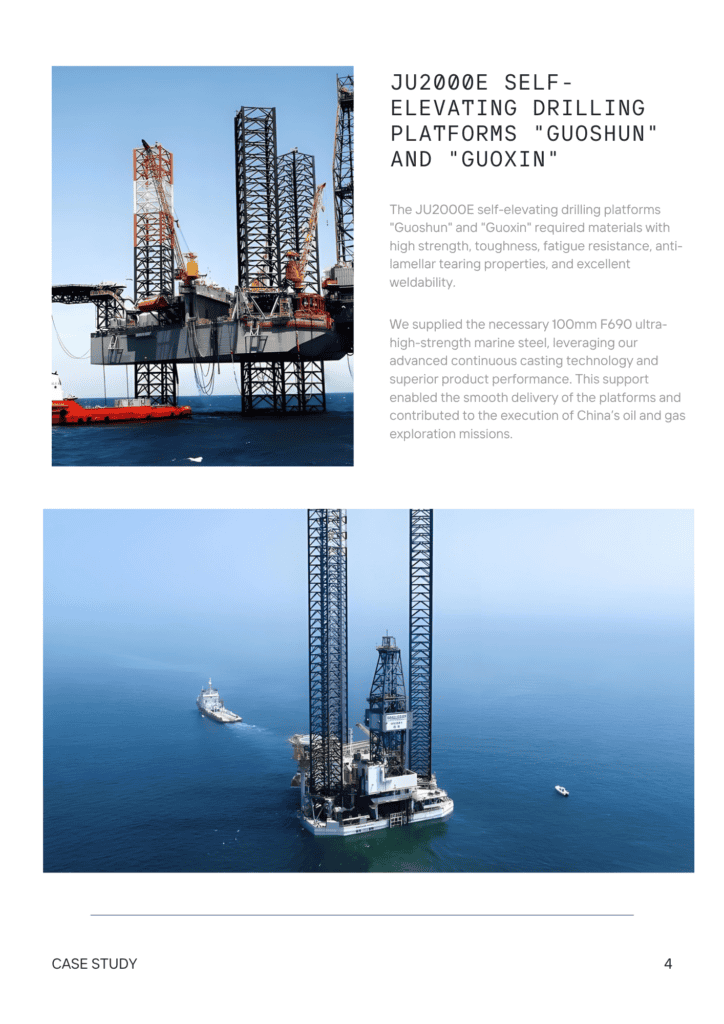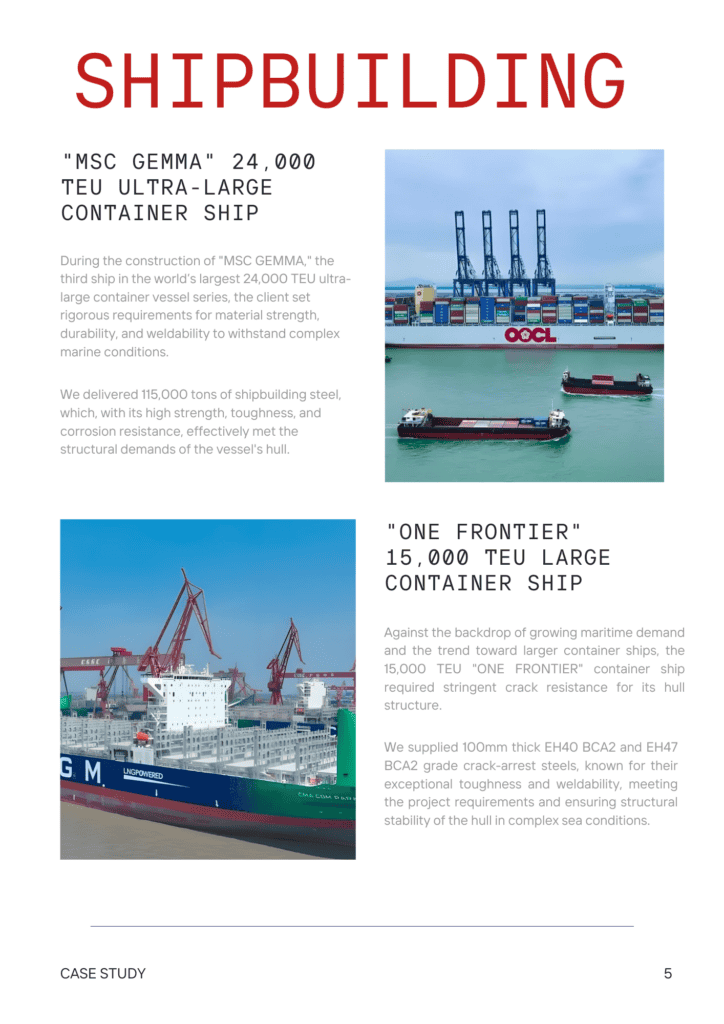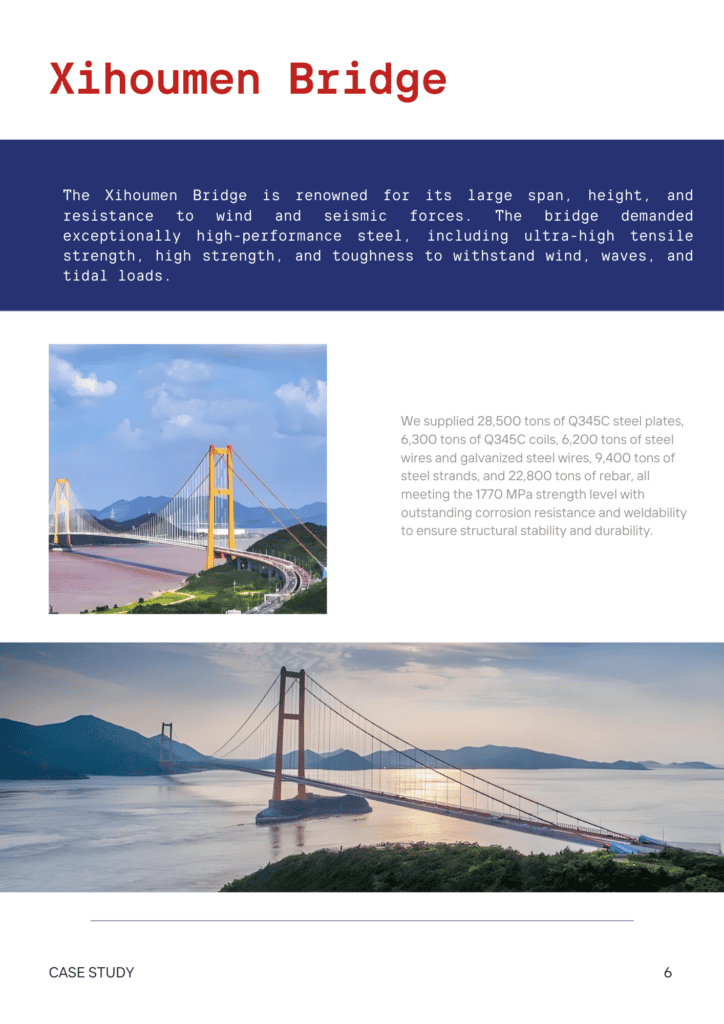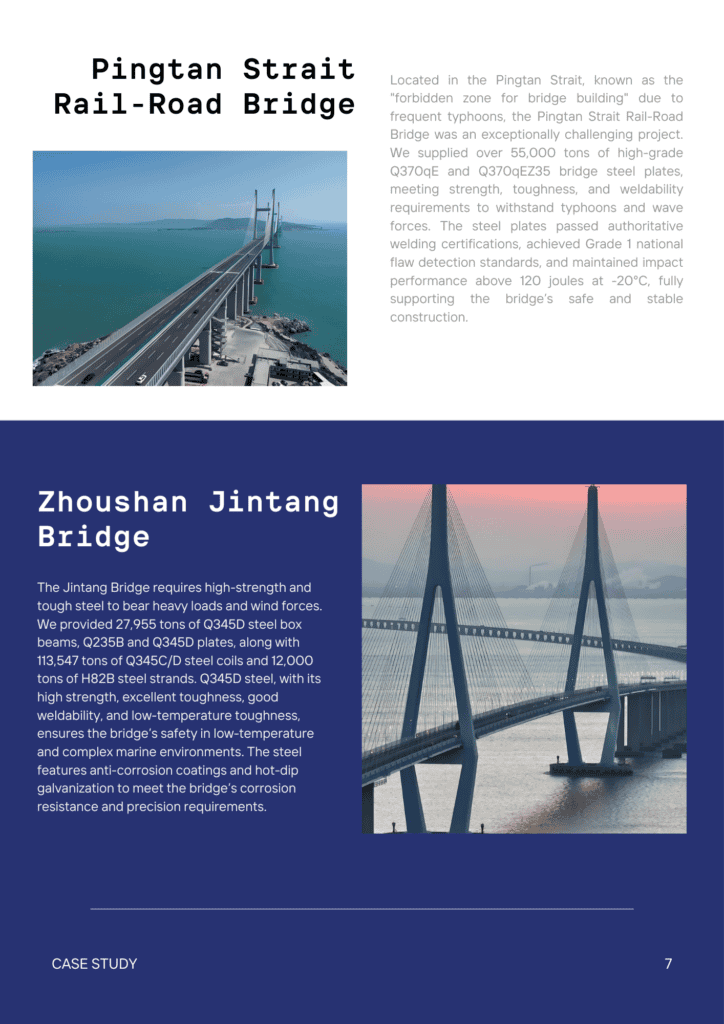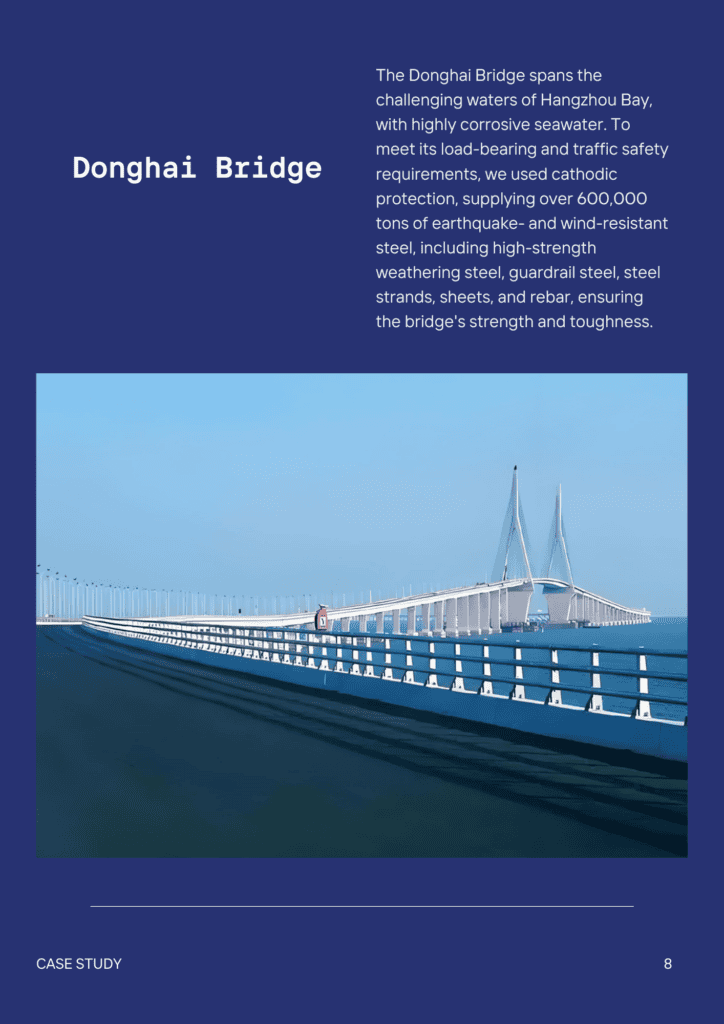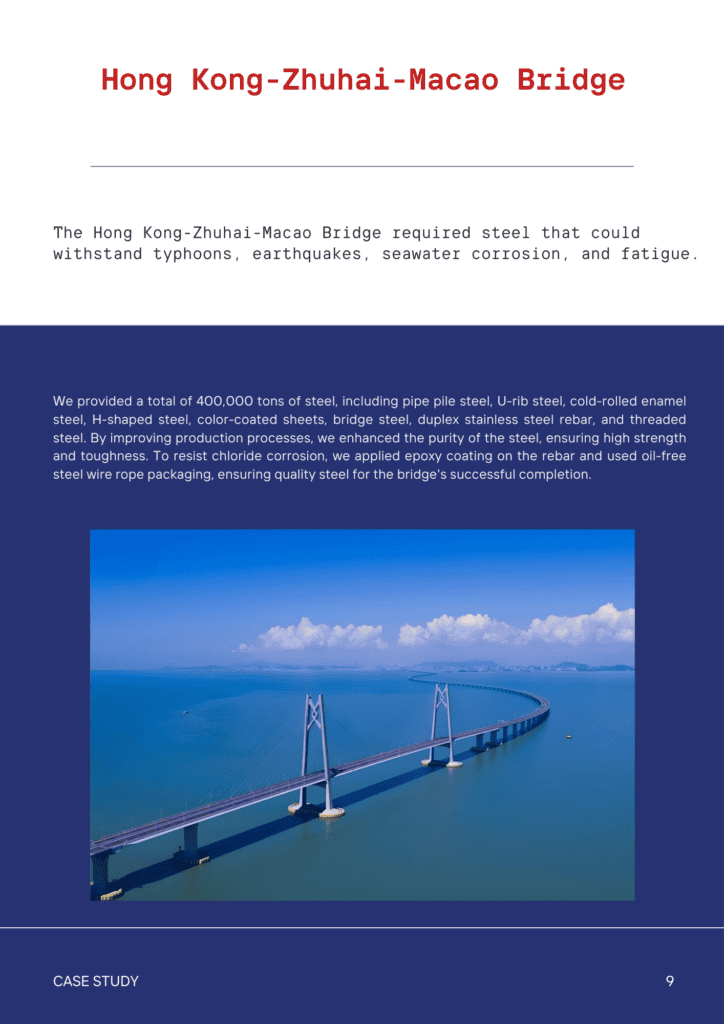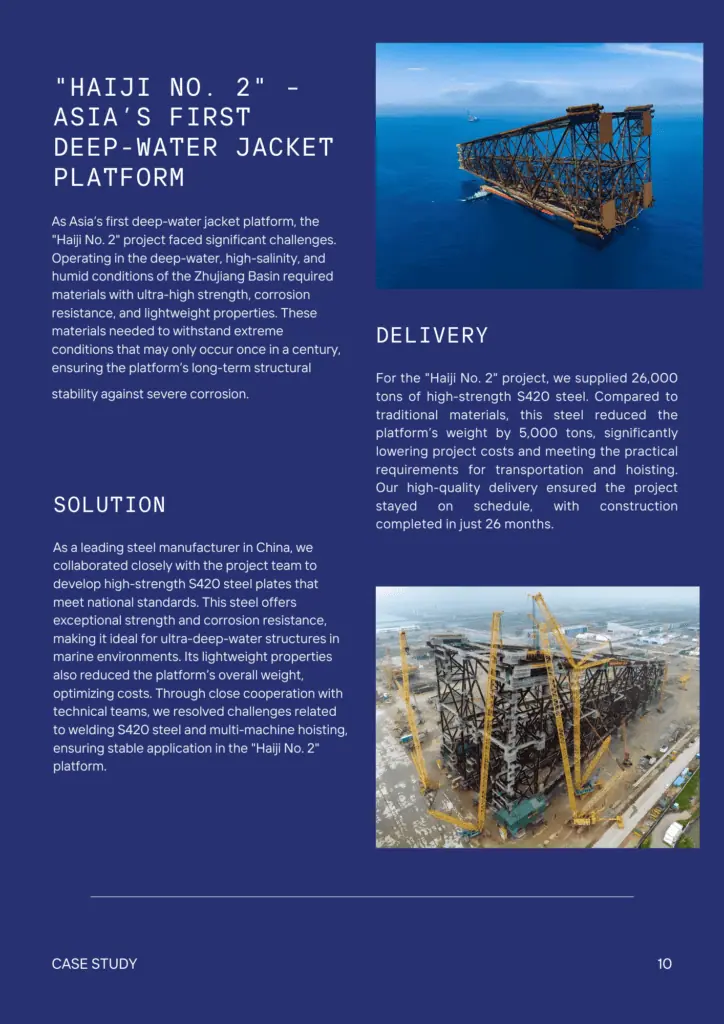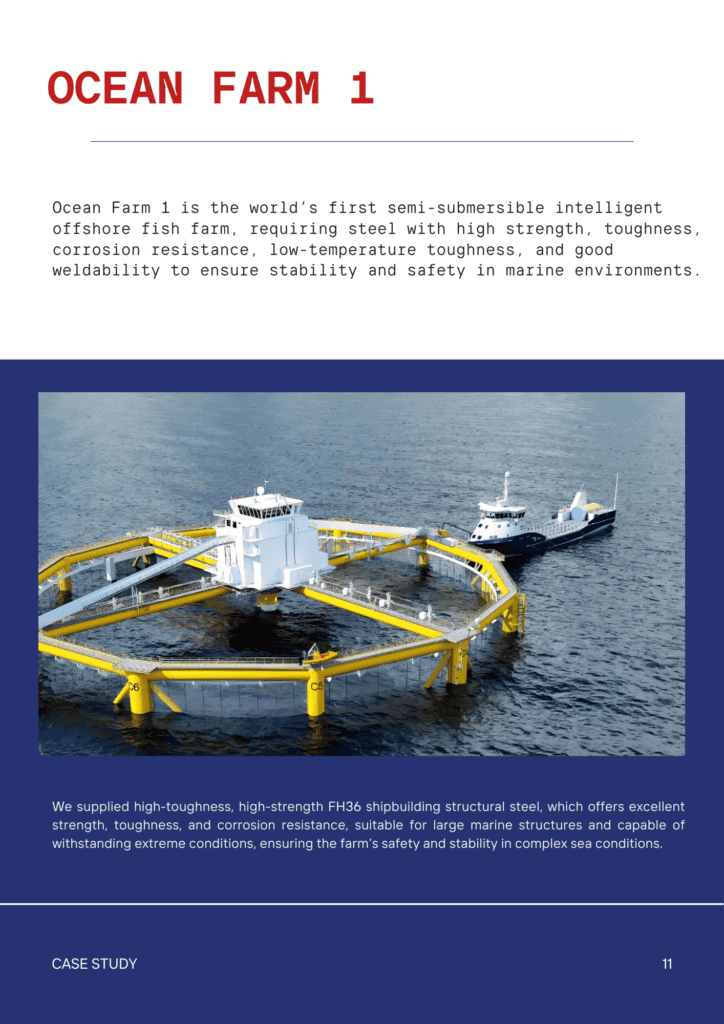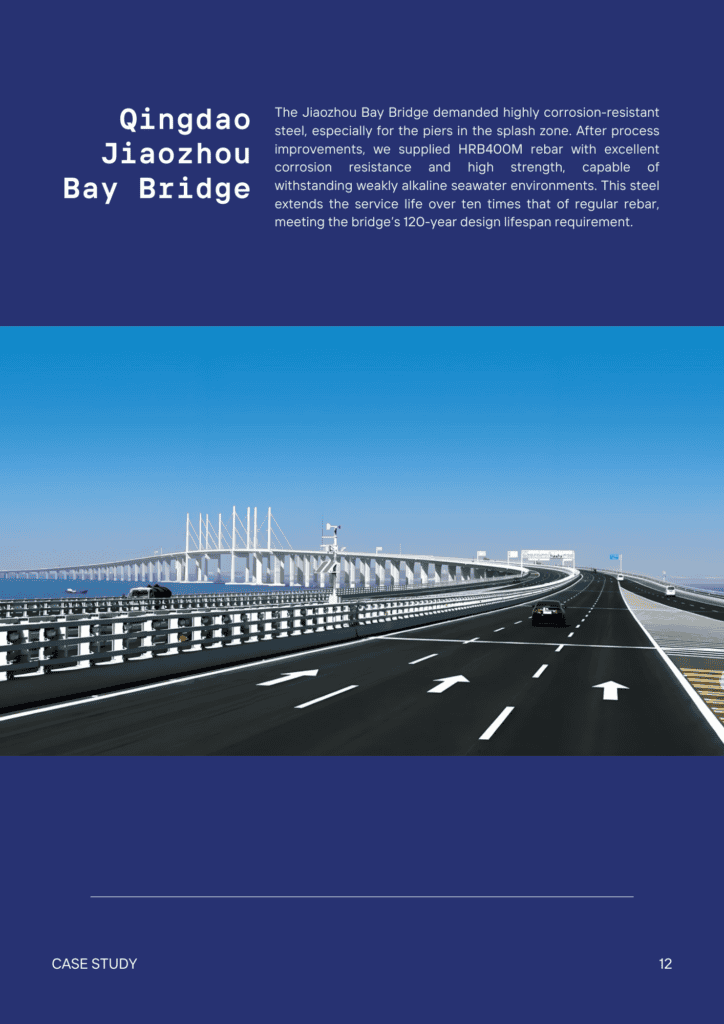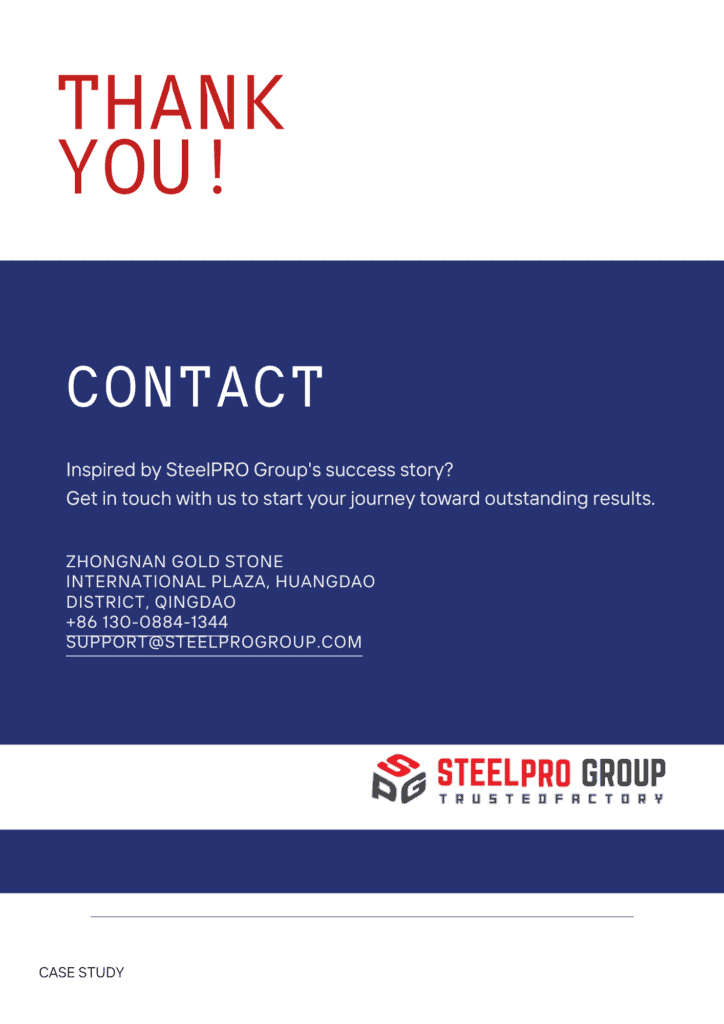EH36 | High Strength Shipbuilding Steel
EH36 | High Strength Shipbuilding Steel
EH36 is a high-strength structural steel grade used primarily in shipbuilding. It adheres to the ASTM A131 standard. Equivalent grades include LR EH36, BV EH36, and NV EH36.
EH36 offers good toughness, high tensile strength, and strong resistance to impacts in low temperatures. It is mainly used in the construction of ship hulls, offshore platforms, and other marine structures.
We supply EH36 steel plates with certified impact toughness tailored to meet critical structural needs in shipbuilding.
Description
What Is EH36?
EH36 is a high-strength structural steel composed of approximately 98% iron and 2% carbon, manganese, and other elements. It is typically in the form of solid plates and possesses excellent tensile strength and impact resistance. EH36 steel is processed through hot rolling and is widely used in the shipbuilding and offshore engineering industries, particularly for constructing ship hulls and offshore platforms. It also has good weldability and corrosion resistance, making it suitable for long-term use in harsh marine environments.
Characteristics of EH36
EH36 steel is a high-strength, low-alloy steel primarily used in shipbuilding. It offers excellent toughness and high yield strength, making it ideal for structures exposed to harsh marine environments. EH36 is highly weldable and has good resistance to brittle fracture. It performs well in low temperatures, maintaining its strength and durability.
Key advantages of EH36 include its superior tensile strength and excellent performance in extreme conditions. It is widely used in the construction of ship hulls, offshore platforms, and other marine structures where high strength and resilience are required.
Alternatives like AH36, DH36, or S355 can be considered for applications with different requirements. These steels provide similar strengths but may offer toughness, weldability, or corrosion resistance variations, making them suitable for different specific requirements.
EH36 Steel Manufacturer
SteelPro Group offers professionally certified and internationally accredited EH36 products designed for large, heavy-duty vessels. Our product range includes plates and profiles with a thickness range of 6 mm to 100 mm. We can also provide specialize in large-format plates to minimize welding and enhance structural integrity. Backed by trusted experience supplying steel to shipyards for icebreakers, OSVs, LNG carriers, and tankers, we are a reliable partner for demanding shipbuilding projects.
-
- Standard: ASTM A131, EN 10025
- Certificate: EN 10204 Type 3.2
- Impact Strength: 34 J at -40°C
Classifications

Chemical Compositions
| Element | Content (%) |
|---|---|
| Carbon, C | ≤ 0.18 |
| Manganese, Mn | 0.90 – 1.60 |
| Silicon, Si | 0.10 – 0.50 |
| Phosphorus, P | ≤ 0.035 |
| Sulfur, S | ≤ 0.035 |
| Aluminum, Al | ≥ 0.015 |
| Copper, Cu | ≤ 0.35 |
| Chromium, Cr | ≤ 0.20 |
| Nickel, Ni | ≤ 0.40 |
| Molybdenum, Mo | ≤ 0.08 |
| Nitrogen, N | ≤ 0.009 |
| Vanadium, V | ≤ 0.05 |
| Niobium, Nb | ≤ 0.05 |
| Titanium, Ti | ≤ 0.02 |
Physical Properties
| Property | Metric | Imperial |
|---|---|---|
| Density | 7.8 g/cm³ | 0.282 lb/in³ |
| Melting Point | 1,510 °C | 2,750 °F |
| Thermal Conductivity | 49.8 W/m·K | 28.8 BTU/hr·ft·°F |
| Electrical Conductivity | 6.99 MS/m | 12.1% IACS |
| Specific Heat Capacity | 486 J/kg·K | 0.116 Btu/lb·°F |
| Thermal Expansion Coefficient | 12.3 µm/m·°C | 6.83 µin/in·°F |
| Electrical Resistivity | 14.3 µΩ·cm | 14.3 µΩ·cm |
Mechanical Properties
AC (Air Cooled) Sate
| Property | Metric | Imperial |
|---|---|---|
| Tensile Strength | 490 – 620 MPa | 71 – 90 ksi |
| Yield Strength | ≥ 355 MPa | ≥ 51 ksi |
| Brinell Hardness | 170 – 235 HB | 170 – 235 HB |
| Rockwell Hardness | 80 HRB (approx.) | 80 HRB (approx.) |
| Vickers Hardness | 170 HV (approx.) | 170 HV (approx.) |
| Elongation | ≥ 22% | ≥ 22% |
| Elastic Modulus | 200 GPa | 29 msi |
QT (Quenched & Tempered) State
| Property | Metric | Imperial |
|---|---|---|
| Tensile Strength | 490 – 620 MPa | 71 – 90 ksi |
| Yield Strength | ≥ 355 MPa | ≥ 51 ksi |
| Elongation | ≥ 21% | ≥ 21% |
| Reduction of Area | – | – |
| Impact Absorption Energy | 34 – 50 J at -40°C | 25 – 37 ft·lbf at -40°F |
| Elastic Modulus | 200 GPa | 29 msi |
Industries & Applications
| Industry | Application |
|---|---|
| Shipbuilding | Hull structures, Deck plates, Bulkheads, Offshore platforms |
| Marine Equipment | Barges, Tankers, Cranes, Docking facilities |
| Oil & Gas | Offshore drilling rigs, Subsea pipelines, FPSO units, Support vessels |
| Construction | Bridges, Structural beams, Heavy-duty supports, Reinforced concrete structures |
| Defense | Naval ships, Armored vehicles, Military bunkers, Submarines |
| Renewable Energy | Wind turbine foundations, Wave energy converters, Tidal energy structures, Offshore wind farms |
| Transportation | Cargo ships, Railcars, Large trucks, Container vessels |
| Mining | Mining equipment frames, Conveyor belts, Excavator parts, Mining trucks |
Machining
Heat Treatment
- Austenitizing: Heat the steel to ~900°C (1652°F) to transform its microstructure for quenching.
- Quenching: Rapidly cool in water or oil to increase hardness, though it becomes more brittle.
- Tempering: Reheat to 590-650°C (1094-1202°F) to reduce brittleness while keeping strength.
- Cooling: Slowly cool to room temperature in still air.
Surface Finish
- Polishing: Smooths the surface.
- Sandblasting: Removes impurities and increases roughness.
- Pickling: Removes oxides and rust.
- Oiling: Prevents rust.
- Coating/Painting: Enhances corrosion resistance.
*Customization is available upon request.
Disclaimer
The provided heat treatment and surface treatment processes are general guidelines. Actual conditions may vary depending on specific applications and requirements. It is recommended to consult with a professional metallurgist or material scientist to tailor the processes to your particular needs. The information herein is not a substitute for professional advice and should not be relied upon as such.
Our Service
SteelPRO Group – manufacturer and solution provider for special steel, offering multi-industry application solutions and customised services, 100% quality free, accompanying customers in their growth!
Our Quality Control
- Roundness
- Tolerance
- Microstructure
- Non-Destructive Testing
- Destructive Testing
- Process Control
Service Integration Processing
- Welding
- Metal Fabrication
- CNC Machining
- Lathe
- Forming
QUESTION 1
QUESTION 2
QUESTION 3
QUESTION 4
QUESTION 4
CONTACT
CONTACT
Certifications







Other Products
-
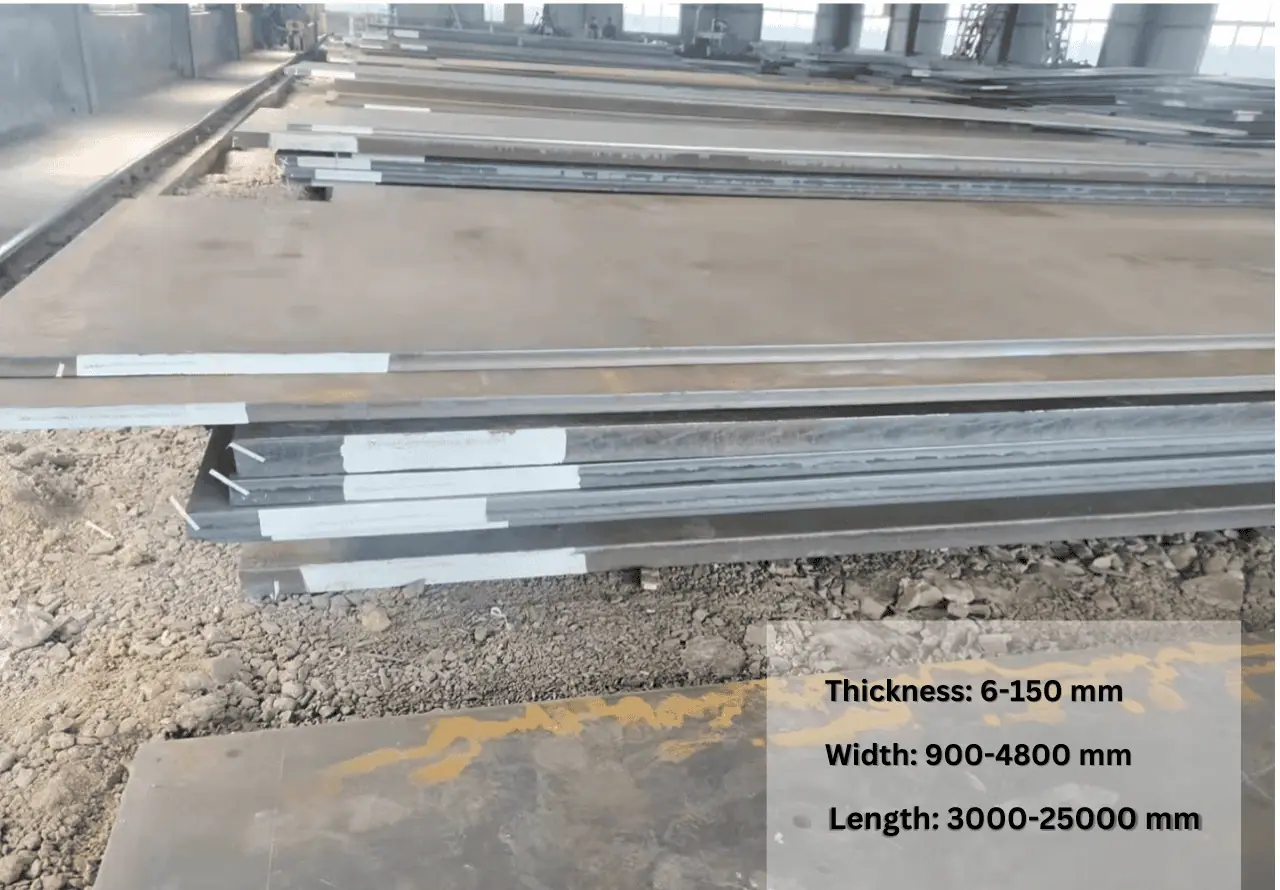
-
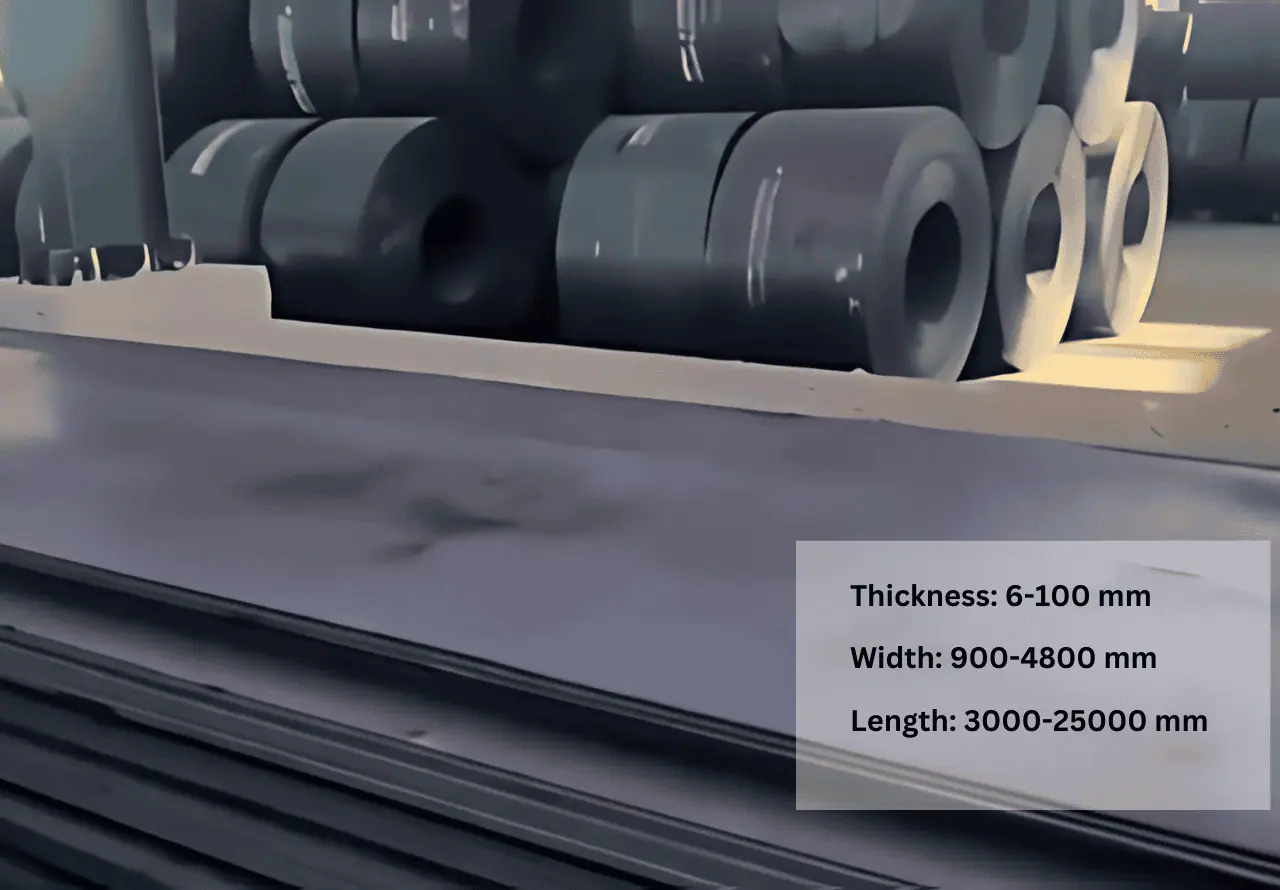
SteelPRO Group offers FH550 high-strength structural steel plates for shipbuilding....
-
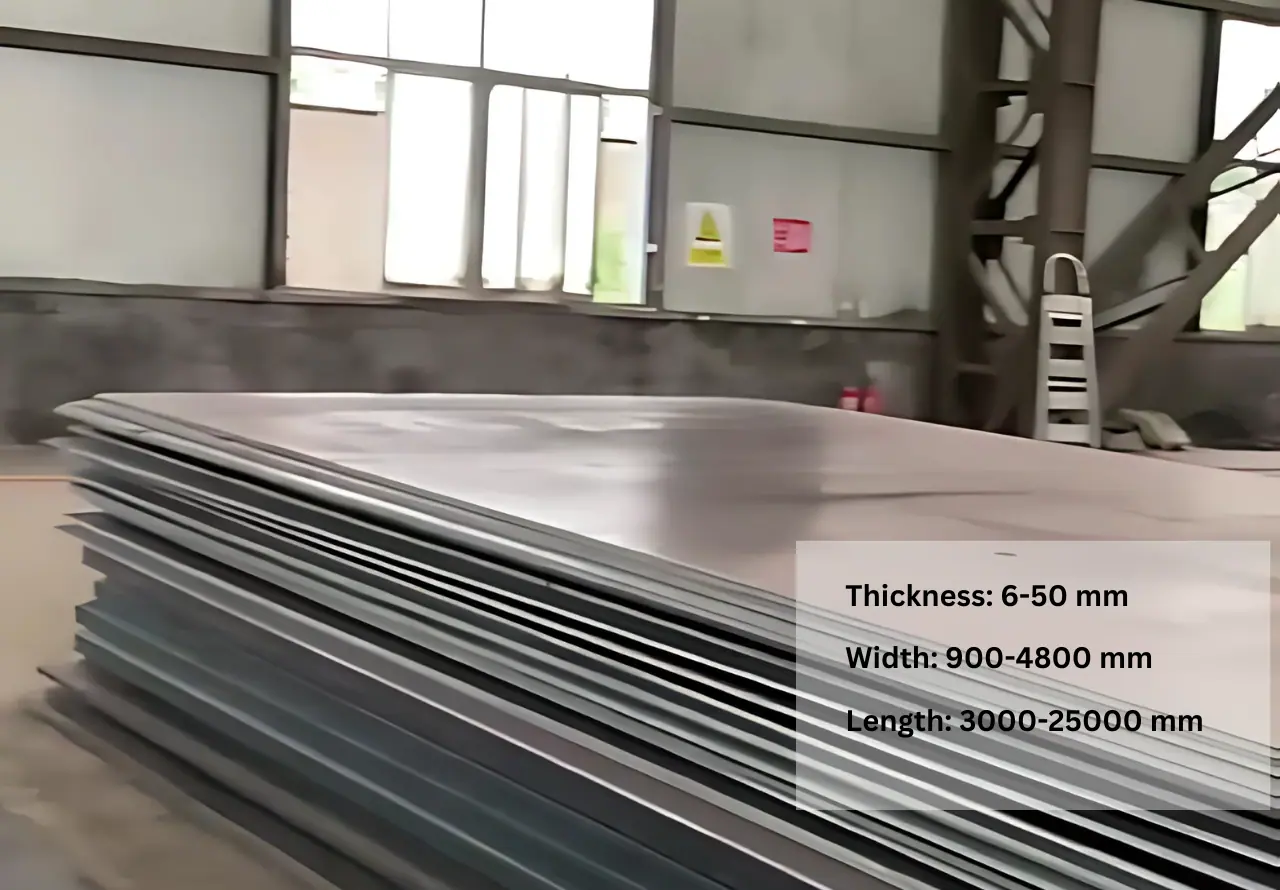
SteelPRO Group offers DH550 high-strength shipbuilding steel plates in stock....
-
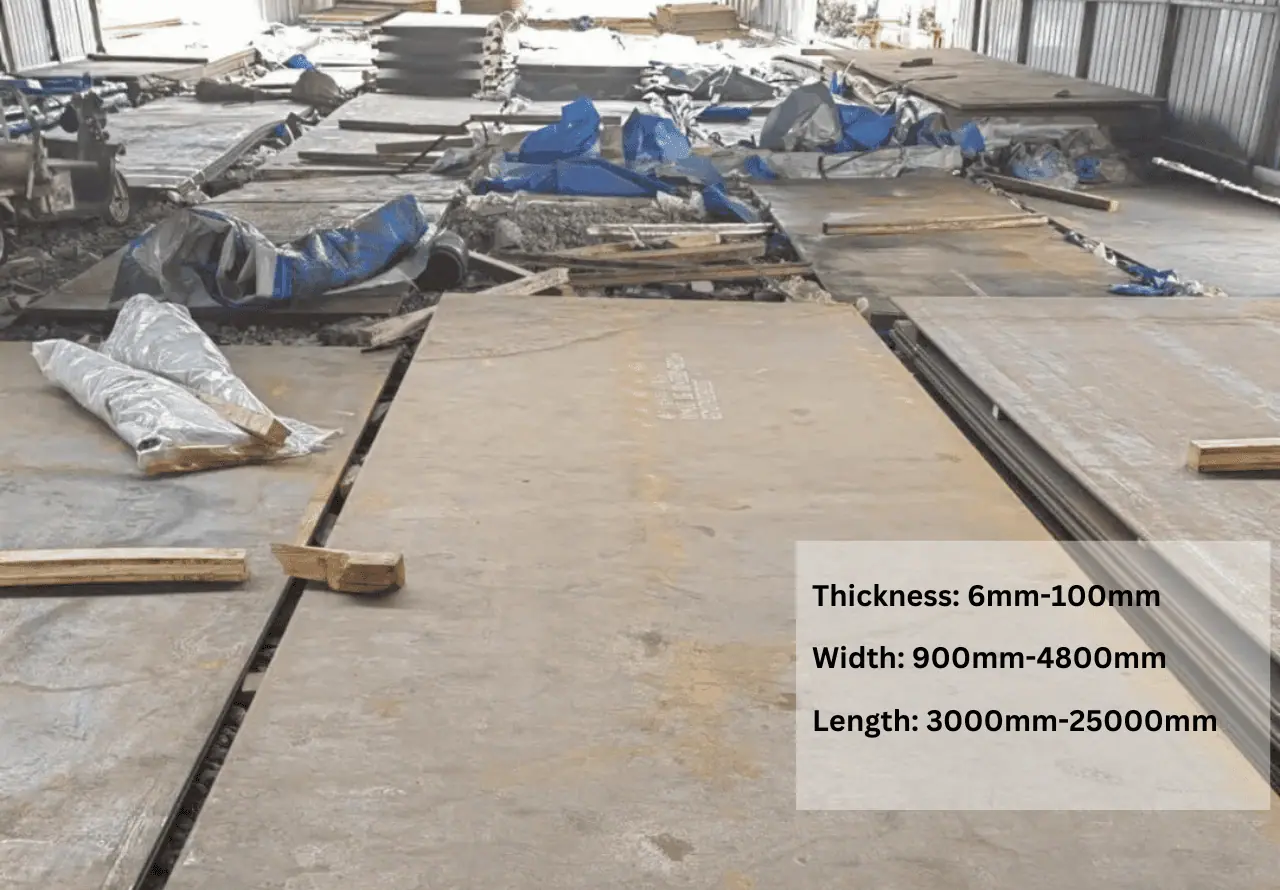
SteelPro Group offers FH36 high-strength steel for shipbuilding. It has...


